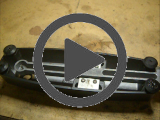I recently met a local gentleman who turned out to be a keyboardist with a fondness for instruments from his younger days. Among the items that remain in his collection is this 1977 Seventy Three that he purchased new. After playing the piano for a few years, other priorities left the Rhodes in storage where it remained until now.

|





